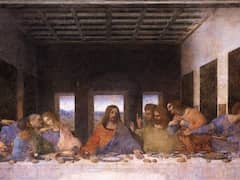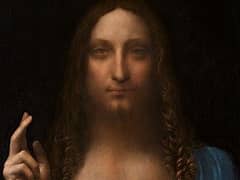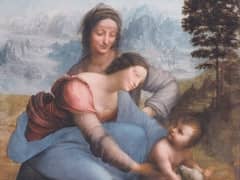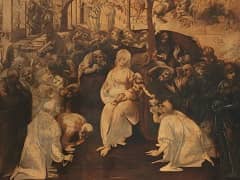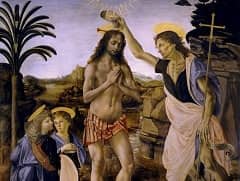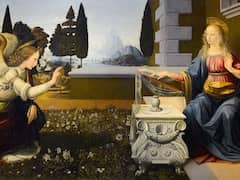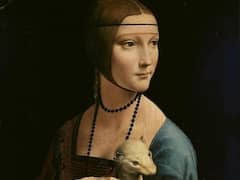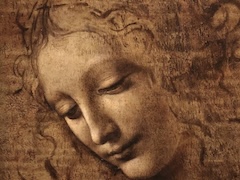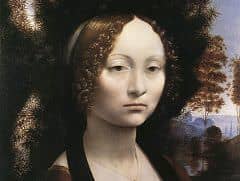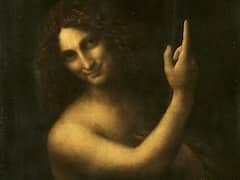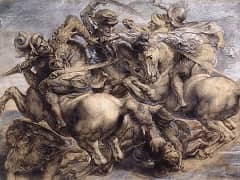10 Leonardo da Vinci Facts That Might Surprise You

1. Leonardo da Vinci was the illegitimate son of a respected notary/lawyer, Messer Piero Frosino di Antonio da Vinci, and a young peasant woman named Caterina di Meo Lippi, and spent his very early childhood
with his mother in the town of Anchiano, Italy. When he was five years old, the future Renaissance icon went to live with his father in Vinci.
2. Not his surname: Leonardo had no surname in the modern sense - "da Vinci" simply means "of Vinci". Vinci is a village near the Metropolitan City of Florence in the Italian region of Tuscany.
3. Although he became one of the greatest artists in history, Leonardo had little formal training. He received some tutelage in his father's home in Latin and mathematics, and when he was 14, he
became an apprentice in the studio of the prominent artist Verrocchio in Florence. During his seven years there, Leonardo da Vinci would have gained knowledge about a number of crafts, including drafting,
metallurgy, plaster casting and carpentry. He also had exposure to drawing, painting and sculpting.
4. He was ambidextrous - he could draw forward and backward with opposing hands simultaneously. Leonardo da Vinci wrote most of his work from right to left. The result of this writing was a mirror script,
which was difficult to read. Some historians explain the many backwards-written texts among Leonardo's papers as the artist's effort to encode his ideas against theft, but others speculate that when writing with
his left hand, Leonardo da Vinci reversed direction as a means of avoiding inevitable smears of the wet ink, charcoal or chalk he was using.
5. The epitome of the Renaissance man, Leonardo da Vinci was an accomplished musician as well as a master painter. He sang in addition to playing the lyre and the flute, frequently at gatherings of
the nobility and at his patrons' palaces. His surviving manuscripts contain some of his musical compositions too. The artist customarily listened to music as he painted. According to his own writings,
Leonardo considered music to be closely related to the visual arts, since it was similarly dependent upon one of the five senses, yet less enduring than a painting because the sound immediately fades away.
6. Although many notable artists following Leonardo, including Rembrandt, Van Gogh,
Monet, Picasso, and Matisse, produced numbers of self-portraits, Leonardo da Vinci
left behind only one, the Portrait of a Man in Red Chalk, which Leonardo drew at approximately 60 years of age.
7. Bill Gates owns the only copy of Leonardo da Vinci's 72-page illustrated manuscript the Codex Leicester, which is also known as the Codex Hammer, that resides outside of Europe. The collection is
variously named after the Earl of Leicester or Armand Hammer, both of whom once owned copies. The Microsoft billionaire purchased the science-themed notebook at a Christie's auction in the mid-1990s for nearly $40
million. The work, which includes pages that Leonardo da Vinci wrote between 1506 to 1510 in Milan and Florence, covers such diverse topics as the diffusion of light in the heavens, musings on why the moon is
luminous, and a study of hydrodynamics.
8. Some of the Renaissance artist's lesser-known invention plans, all of which would later be put into general usage, include: an underwater breathing apparatus, a life preserver, a diving bell, a pile
driver, an armored car, a revolving crane, a parachute, a pulley, a method to concentrate solar power, water-powered mills and engines, single-span bridges
9. As a painter, Leonardo naturally took a keen interest in the properties of light and illumination. However, unlike other artists, he turned his scientific mind to the task of dissecting these
properties to better understand their inner workings. This signature method of inquiry led him to correctly postulate why the sky is blue, far ahead of such physicists as John Tyndall or Lord Rayleigh of
the 19th century. In one of his numerous notebooks, da Vinci wrote that people perceive the sky to be blue due to the sun's illumination of minute particles of moisture in the atmosphere.
10. Leonardo argued that, according to the Biblical timetable, there would not have been sufficient time for the movement of rivers and sea levels to create the geological formations of the earth's
surface. He suggested that, based upon his own observations of the movement of water and the features of mountains, the age of Earth was far greater than implied in the Bible. He attributed the presence
of sea fossils on mountainsides to receding sea levels rather than the great flood described in the Bible.


